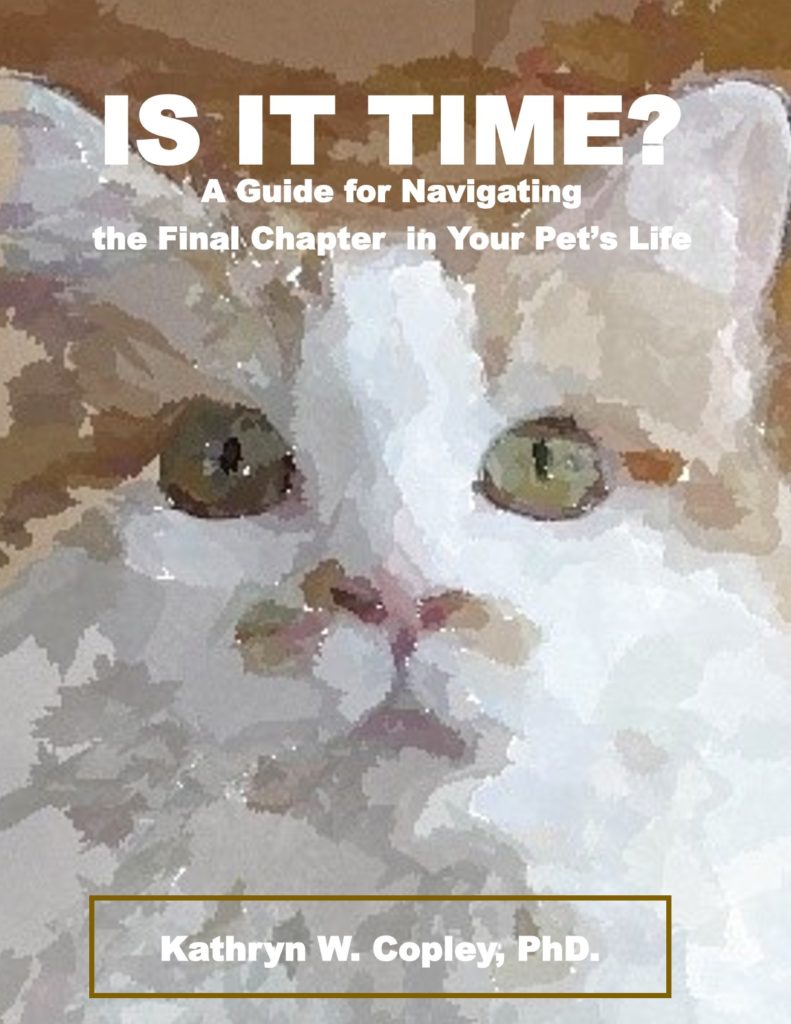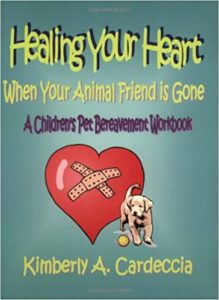FOR PARENTS
Pet Loss and Children by Cheri Barton Ross
Grieving the Death of a Pet by Betty Carmack
Pet Loss: A Spiritual Guide by Eleanor L. Harris
WHEN YOUR CHILD LOSES A BELOVED PET
The death of a pet may well be your child’s first experience with death, and with your help it can set the stage for your child to handle future losses in a healthy way. With that in mind, it is worthwhile for parents to make a particular effort to understand what children of various ages can be expected to understand and ways a parent can convey the truth of a pet’s passing.
The beloved dog or cat that you call a pet may be a family member to young children because their cognitive development isn’t advanced enough to make the distinction that pets aren’t human. Children younger than 9 years old may believe, for example, that death is a temporary state or that it can be corrected with a trip to the doctor. Or they may believe they caused the death by wishing for a puppy to replace their elderly dog. Older children may believe they could and should have prevented their pet’s death by taking it for more frequent walks or playing with it more often.
For children of all ages
If possible, talk to your children when you start noticing changes in your pet’s behavior that point to a decline in quality of life.
Losing a pet may be harder for a child than losing a relative because it has been a constant presence of love and comfort.
Allow children to make their own choices about when and how much to talk, whether and how they want to say goodbye (before the pet dies? after?), and whether they want to see their pet before or after it has died. Some children may choose to view a pet’s body after death to be certain their pet is really gone.
Use simple language. Children need consolation, love, support, and affection more than they need complicated medical or scientific explanations.
Keep your explanation accurate but brief and then ask your child if he or she has questions. With this approach, you’ll be in a better position to gauge their understanding and their desire to know more.
Let your child’s desire to talk and his questions guide you to how much or how little to tell. The questions may change over time, and it may take more than one discussion.
If you decided on euthanasia, your child may wish to be present, or wait in the reception area and come into the room for a last goodbye, or do something completely unrelated.
Reassure your child that your pet would never get better, you did everything possible to save your pet, and nothing your child did or didn’t do caused it to be sick or injured. If you hastened death through euthanasia, explain that this was the kindest way to take the pet’s pain away and the pet died peacefully.
Draw on your own understanding of death, including the viewpoint of your faith if that is relevant. An honest “I don’t know” can be an appropriate answer — it’s OK to tell children that death is a mystery.
Talk about your pet lovingly and often, which helps a child learn that it is OK to talk about the pet, OK to miss it, and that the sadness will go away but the happy memories will remain.
Help children understand that a whole range of emotions is natural – anger at themselves or their pet, sadness, guilt,….And help them understand what they are feeling.
Share your own feelings of sadness or anger — as appropriate to their age and interest – as a way to give them permission to feel these things and show them they are not alone in their feelings. If you lost a pet as a child, share stories about how difficult it was to say goodbye.
Your child’s grief may be more brief and less intense than your own, neither of which means it is less “worthy” than yours.
Should you talk to your children about euthanasia?
The American Veterinary Medical Association says yes, recommending involving children in the decision to euthanize a family pet, writing:
Children have special relationships with their pets and should not be excluded from the decision-making process because they might seem too young to understand. Preventing children from participating in the discussion may only complicate and prolong their grief process. Children respect straightforward, truthful, and simple answers. If they are prepared adequately, children usually are able to accept a pet’s death.
If you try to describe euthanasia, be prepared for the blunt question, “Isn’t that like killing?”
For a child under 5, Dr. Abigail McNamee, chair of the Department of Early Childhood Education at City University of New York advises not going into detail about euthanasia. Instead, when your pet dies in this manner. She writes “you may want to explain that:
- the veterinarians have done everything that they can.
- your pet would never get better.
- this is the kindest way to take the pet’s pain away.
- the pet will die peacefully, without feeling hurt or scared.”
McNamee suggests asking a child 7 or older whether he or she wants to be present for euthanasia. If the answer is yes, the veterinarian can explain – in a brief and age-appropriate way – what will happen and that the pet won’t be in pain. As an alternative, the child can come into the room to say goodbye after the pet dies.
Children grieve differently from adults. These are signs that your child may need extra support in grieving for a lost pet:
- Your child’s grief does not diminish over time.
- Your child shows negative behavioral signs that did not occur before the pet’s death — trouble in school, trouble sleeping, or new somatic complaints like headaches or stomachaches.
Words that can go wrong
If you euthanize your pet, be careful about saying “Boots went to sleep” or “got put to sleep.” Young children take things literally and may be afraid to go to sleep themselves.
“God took Rover” may lead a child to believe God will take them or their family members. A child can get the idea that if they are sick they will be gotten rid of.
It’s tempting to try to protect a child from the pain of a pet’s death, but unless Buffy actually DID run away or you actually DID take your declining pet “to a farm,” don’t say that. It probably won’t alleviate their sadness – their pet is still gone. These explanations may introduce a new concern – that you give away something (the pet) when it is no longer perfect (and you might also give them away if they are not perfect), that you lied to your child, or that the pet chose to run away (abandoning and rejecting them).
Books to help children deal with the loss of a pet
When you review books to help your child deal with the death of a pet, check whether:
- They promote misconceptions about death or disagree with your philosophy.
- They help a child know that their sadness or anger is normal and will go away with time.
- They welcome your child to talk about your pet and to ask questions about death.
- If the book is good but not perfect and you are reading the book to your child, you can leave out the parts you don’t agree with or that aren’t suitable to your situation or child.
Books that may help include….
- Sammy in the Sky by Barbara Walsh
- When a Pet Dies by Fred Rogers
- Remembering My Petby Machama Liss-Levinson and Molly Phinney Baskette
- When Your Pet Dies: A Guide to Mourning, Remembering, and Healing; Compassionate support and practical suggestions to help you understand your grief and begin to heal by Alan D. Wolfelt, Ph.D.
- Healing Your Heart When Your Animal Friend is Gone: A Children’s Pet Bereavement Workbook by Kimberly A. Cardeccia, MA, LPC, NCC
- Dog Heaven and Cat Heaven by Cynthia Rylant
- For Every Dog an Angel and For Every Cat an Angel by Christine Davis
- A Special Place for Charlee by Debby Morehead
- Goodbye, Friend by Gary Kowlaski
- Saying Goodbye to the Pet You Love by Lorri A. Greene, Ph.D.
- Cold Noses at the Pearly Gates by Gary Kurz
- “I Miss My Pet: A workbook for children about pet loss” by Katie Nurmi
- Tear Soup by Pat Schweibert
- The Tenth Good Thing About Barney by Judith Viorst

All the named animals pictured in this blog were someone’s treasured pet. They may have crossed the Rainbow Bridge, but their absence makes them no less beloved.


I may not know what tomorrow will bring, but today I have you.





